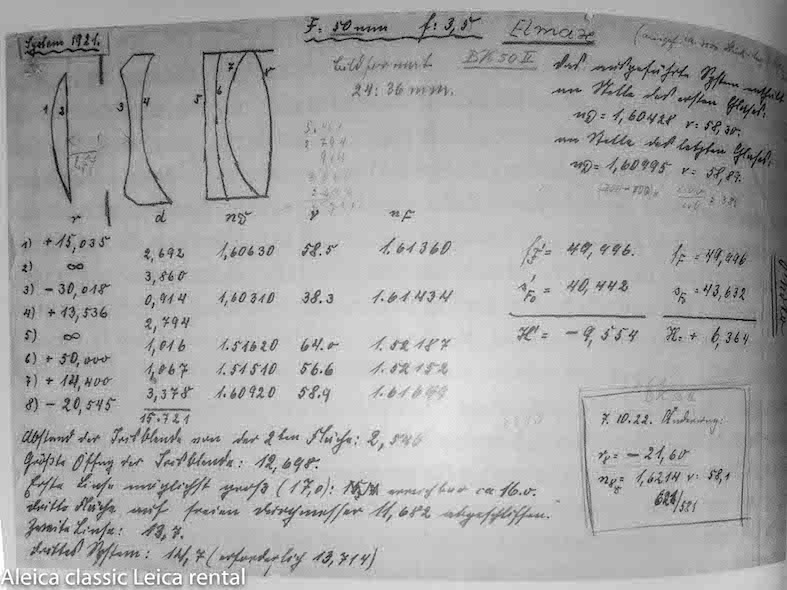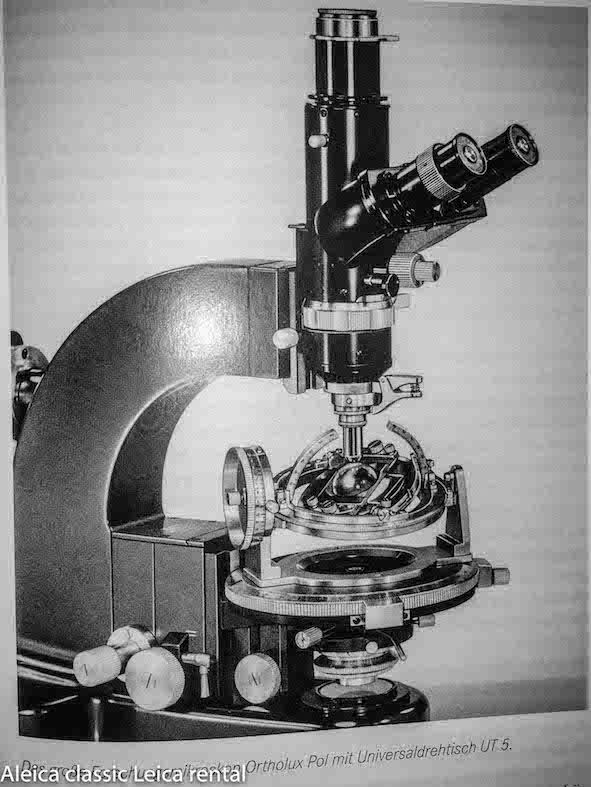Oskar Barnack gets the credits for the design of the Leica camera. But the Leica wouldn’t have had such a good receipt by the market if the sharpness of the lens wasn’t that well as it was. The image quality was a combination of the fine grain of the cine film and the superb qualities of the lens.
The creator of the first Leica lenses was Max Berek, born in 1886 in Ratibor in Silesia (Nowadays Racibórz in Poland).
He came from a humble background; his father was a mill worker. This background probably was the reason of his later social commitment. He was the only child in the family. He went to high school were he was interested in Greek and Latin. But his interest lies also in the minerals and rocks he found around Ratibor.
At the age of 19 he went to University in Berlin for a study Natural Science and Mathematics where he met Max Planck. After his studies he started with Leitz Optical works in Wetzlar where he worked until his early dead in 1949. He worked on polarisation microscopes where he could combine his education at the university with his interest in minerals.
When Oskar Barnack worked on his Lilliput camera Max Berek was the man who designed the lens for that camera. The Anastigmat with 5 lenses was quickly turned in the Elmar 3.5 5cm with 4 lens elements, the breakthrough for the Leica camera business.
Amongst others he also designed the Summar 2.0 5cm, the Hektor 4.5 13,5 cm, the Hektor 2.5 5cm and the predecessor of the world-famous Summicron: the Summitar 2.0 5cm (in 1939).
Max Berek was a hardworking man. He led the lens design department of Leitz. Until late at night he made the many and complicated calculations for the lenses with a slide ruler. Still he was a family man. He named the 1.5 8,5 cm Summarex after his dog Rex who would come from his home to the factory to fetch him for lunch at his house.
Already at the age of 38 he became an honorary professor at Marburg University.
Apart from the lens development he was even more known for his work on improvement for polarisation microscope, for which he designed a complicated 5 axes turntable to measure the optical characteristics of crystals with a polarisation microscope. This was a masterpiece of engineering as the 4 of 5 turn axes had to be adjusted in such a way that they found each other in one single point. Further he was involved in the Psychology of perception especially regarding Light stimuli.
His interests were also in mountaineering (he climbed the Matterhorn and Monte Rose where he always took his Leica to document his performances), culture and politics.
Just like Ernst Leitz II he joined the Reichsbanners, an institute of the Weimar republic. After the national Socialists took over power in 1933 the Reichbanners were not allowed anymore. The Nazis took his honorary professor title from him and only in 1946 it was returned to him.
He was a musician as he played the flute very well and was the founder of the Wetzlar cultural society, together with Elsie Kühn Leitz, daughter of Ernst Leitz II.
Clearly Max Berek was a very open minded and versatile person.
A lot of information on Max Berek can be found in the book ”Max Berek Schöpfer der ersten Leica Objektive, Pionier der Mikroskopie”, Knut Kühn- Leitz, ISBN 978-3-89506-284-1. As far as I know the book is in German only.



